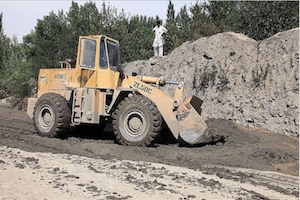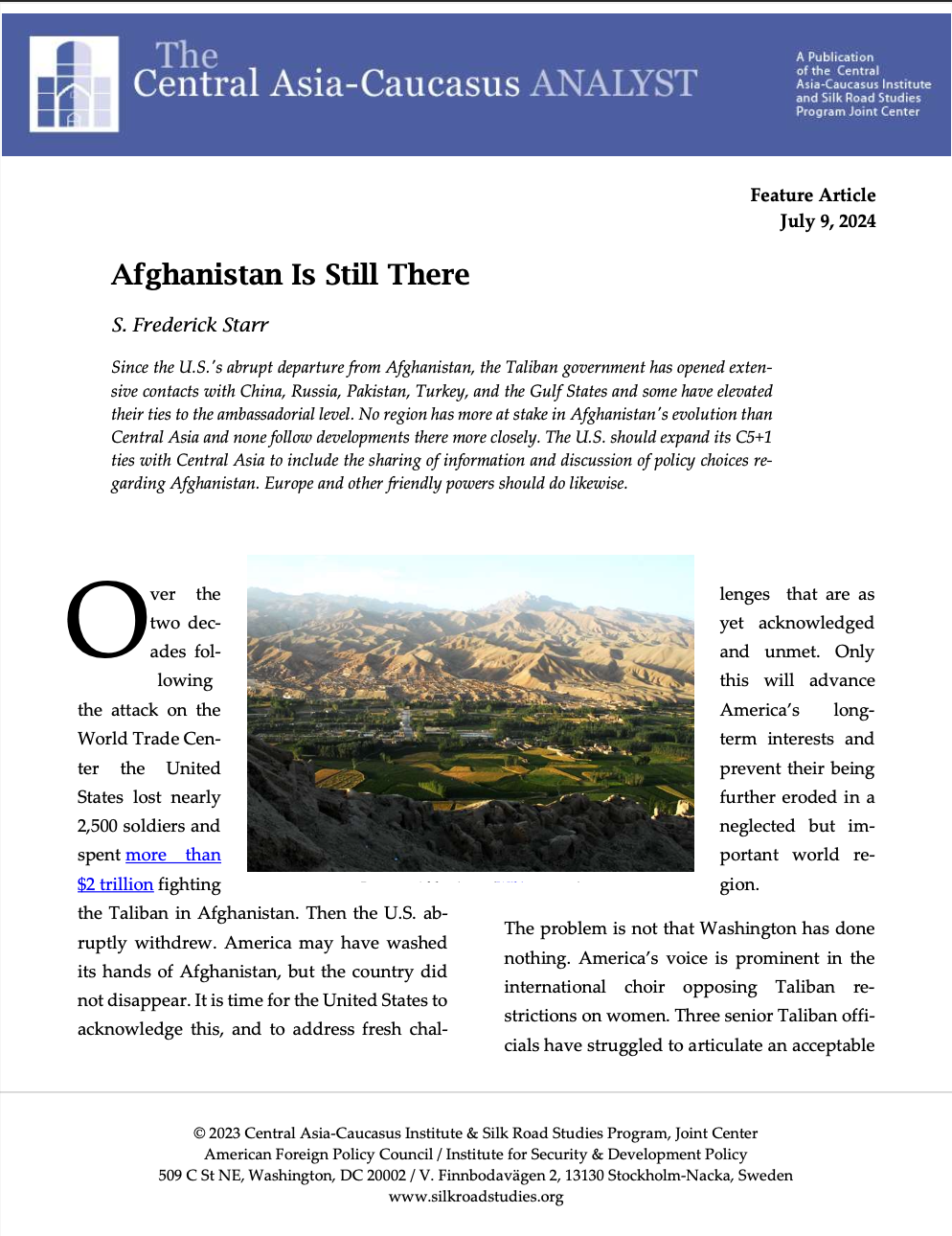Afghanistan Is Still There
S. Frederick Starr
July 12, 2024
Since the U.S.'s abrupt departure from Afghanistan, the Taliban government has opened exten- sive contacts with China, Russia, Pakistan, Turkey, and the Gulf States and some have elevated their ties to the ambassadorial level. No region has more at stake in Afghanistan's evolution than Central Asia and none follow developments there more closely. The U.S. should expand its C5+1 ties with Central Asia to include the sharing of information and discussion of policy choices re- garding Afghanistan. Europe and other friendly powers should do likewise.
Afghanistan's Mineral Deposits Again Attract International Interest, Unrest and Smuggling
By John C. K. Daly
September 27, 2017, the CACI Analyst
On August 22, after nearly 16 years of war in Afghanistan, U.S. President Donald Trump announced his intention to increase the U.S. military presence there, extending the longest war in U.S. history and adding billions more dollars to its cost, now estimated to over US$ 1 trillion since 2001. In searching for revenue streams to support this outlay an idea that has been around for more than a decade is being revived: exploiting Afghanistan’s rich, underused mineral wealth. Despite the extent of the country’s mineral deposits being well known, many impediments remain to their development despite international interest.




